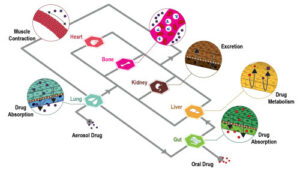Introduction
Brown fat is a kind of body fat that is activated when we get cold, also known as brown adipose tissue. It generates heat to keep our body temperature homeostasis. Brown adipose tissue (BAT) (thermogenic adipocytes) is an emerging and promising field in the research in metabolic diseases. Either promoting BAT proliferation, or White adipose tissue browning are two of the most cutting-edge research lines.
In this article, Farnaz Shamsi et al. were interested in brown fat proliferation. Their work, made in the Joslin Diabetes Center identified for the first time that the temperature-sensitive ion channel Trpv1 (transient receptor potential cation subfamily V member 1) seems critical in the cold-induced de novo recruitment of BAT. These results could lead to possible obesity therapies and related metabolic disorders.

How to culture vascularized & immunocompetent 3D models in a standard Multiwell
Summary
The author states that “Brown adipose tissue (BAT) and beige fat function in energy expenditure in part due to their role in thermoregulation, making these tissues attractive targets for treating obesity and metabolic disorders. While prolonged cold exposure promotes de novo recruitment of brown adipocytes, the exact sources of cold-induced thermogenic adipocytes are not completely understood. Here, we identify transient receptor potential cation channel subfamily V member 1 (Trpv1)+ vascular smooth muscle (VSM) cells as previously unidentified thermogenic adipocyte progenitors. Single-cell RNA sequencing analysis of interscapular brown adipose depots reveals, in addition to the previously known platelet-derived growth factor receptor (Pdgfr)α-expressing mesenchymal progenitors, a population of VSM-derived adipocyte progenitor cells (VSM-APC) expressing the temperature-sensitive cation channel Trpv1. We demonstrate that cold exposure induces the proliferation of Trpv1+ VSM-APCs and enhances their differentiation to highly thermogenic adipocytes. Together, these findings illustrate the landscape of the thermogenic adipose niche at single-cell resolution and identify a new cellular origin for the development of brown and beige adipocytes.”
“The identification of Trpv1-expressing cells as a new source of cold-induced brown or beige adipocytes suggests it might be possible to refine the use of cold temperatures to treat obesity by developing drugs that recapitulate the effects of cold exposure at the cellular level,” added Tseng.
References
Shamsi, F., Piper, M., Ho, LL. et al. Vascular smooth muscle-derived Trpv1+ progenitors are a source of cold-induced thermogenic adipocytes. Nat Metab (2021). https://doi.org/10.1038/s42255-021-00373-z



